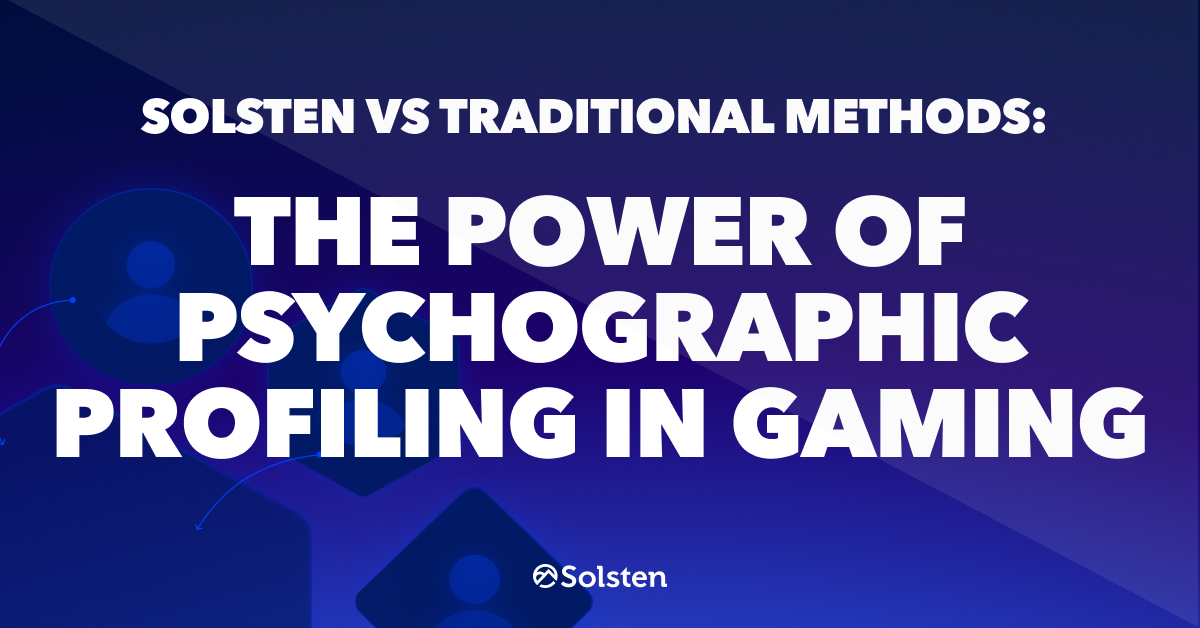As the industry has grown and evolved, the methods for analyzing and understanding player behavior have evolved with it. While studios have long relied on behavioral analytics and gamer motivations, Solsten’s approach to psychographic profiling is revolutionizing how developers understand and engage with their players. This article will explore the differences between traditional player analytics methods and Solsten’s psychographic profiling, highlighting why Solsten is becoming an indispensable tool for modern game developers.
The Evolution of Player Analytics
Game developers have historically relied on a combination of demographic data, behavioral metrics, and market research to understand their players. Let’s break down these traditional methods:
- Demographic Targeting: Traditional analytics often start with basic demographic information like age, gender, and location. While this data can give developers a broad understanding of who is playing their game, it fails to capture the nuances of ‘why’ they’re playing and what drives their engagement.
- Behavioral Analytics: Metrics like playtime, retention rates, and monetization patterns have been the backbone of game analytics. These data points tell you what players are doing in your game but don’t explain their motivations.
- Traditional Market Research: Surveys, focus groups, and user testing are used to understand player preferences. However, these methods are time-consuming, expensive, and provide limited insights due to small sample sizes and biased questions and responses.
These methods have their merits, but they wind up providing a fragmented view of the player, and don’t capture the psychological nuances that drive engagement and loyalty.
Solsten’s Psychographic Profiling Approach
Solsten’s approach represents a paradigm shift in player analytics. At its core is a sophisticated psychographic profiling system that delves deep into the psychological makeup of players. Here’s what sets Solsten apart:
- Comprehensive Psychological Assessment: Solsten’s assessment is an adaptive psychological questionnaire that measures over 200 psychological traits, including personality factors, intrinsic motivations, and value systems. This goes far beyond surface-level demographics to understand the core drivers of player behavior. While behavior tells you what your players have done, psychological traits tell you what they will do.
- AI-Driven Analysis: Solsten uses advanced AI and machine learning algorithms to process and analyze the vast amount of data collected. This identifies the complex patterns and insights that would be impossible to find through traditional methods.
- Scale and Representativeness: With Solsten’s approach, a game with just 10,000 daily active users can generate insights representative of a population of over 1 million players, at a 95% confidence level. This level of statistical robustness is rarely achievable with traditional market research methods.
- Continuous Improvement: Solsten’s AI-based assessment improves monthly, allowing for more accurate measurement of more traits with fewer questions over time. This way, the insights provided are always cutting-edge and increasingly valuable.
Comparative Analysis: Solsten vs. Traditional Methods
Let’s break down how Solsten’s approach compares to traditional methods in five key areas:
- Depth of Player Understanding: Traditional methods provide a surface-level understanding based on what players do. Solsten reveals why players behave the way they do by uncovering their underlying psychological motivations.
- Predictive Power: Behavioral analytics are a representation of past behavior — they can’t predict the future. On the other hand, Solsten’s psychological profiling can predict player responses to new features or changes that have no historical data, based on a deep understanding of player psychology.
- Actionability of Insights: Traditional analytics need significant interpretation to translate into game design decisions. Solsten’s insights are directly applicable to game design, feature development, and marketing strategies.
- Flexibility and Customization: Traditional methods rely on standardized metrics that don’t capture the unique aspects of your game. Solsten’s approach allows for customization so the insights generated are relevant to your specific game and audience.
- Cost-effectiveness and ROI: Traditional market research is expensive and time-consuming. Solsten’s automated, AI-driven approach provides deeper insights faster at a lower cost, especially when considering the depth and breadth of insights generated.
Data Freshness and Relevance
One of the true advantages of Solsten’s approach is the freshness and relevance of the data studios have to work with. The platform continuously collects and analyzes data, which guarantees insights are current. This is in contrast to traditional market research methods, which provide a snapshot in time that can quickly become outdated.
Beyond Traditional Analytics
Solsten is designed to enhance — not replace — existing analytics and research efforts. It works alongside current user research teams, providing an additional layer of deep psychological insights that can inform and enhance traditional research methods.
While traditional player analytics methods have served the industry well, they are increasingly insufficient in today’s complex and competitive gaming landscape. Solsten’s psychographic profiling approach represents a significant leap forward in our ability to understand and engage players.
By providing deep, actionable insights into player psychology, Solsten empowers developers to create games that truly resonate with their audience. This can lead to improved player engagement, retention, and monetization, ultimately resulting in more successful and sustainable games.
In an industry where player expectations are constantly evolving, embracing the power of psychographic profiling isn’t just an advantage – it’s becoming a necessity. Developers who leverage these deep psychological insights will be best positioned to create games that not only attract players but keep them engaged for the long term.


